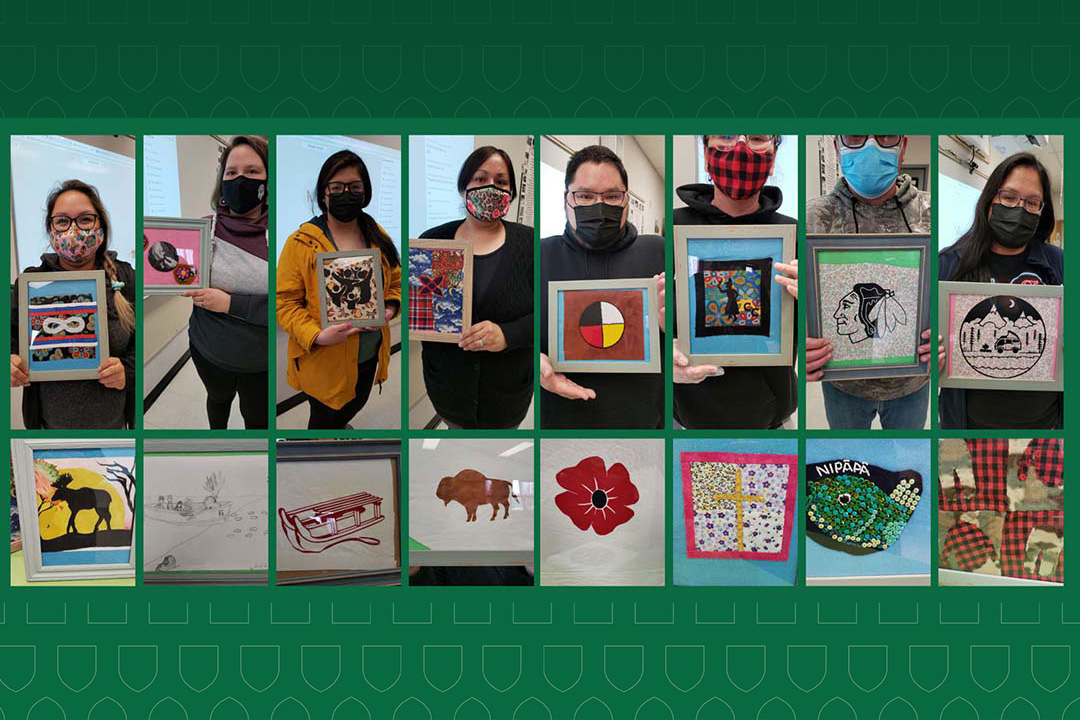
USask students capture history in northern Indigenous community through quilting
University of Saskatchewan (USask) College of Education students are helping to preserve the culture and history of the province’s oldest permanent settlement, one quilt patch at a time.
Established in 1774, Cumberland House is located in the heart of the Saskatchewan River Delta and is home to many First Nations and Métis peoples. As part of an Indigenous Studies course in the college’s Cree teacher education program, USask students located in the northern community have worked to translate the stories of their relatives and Elders into quilt patches.
“Part of our Indigenous Studies pedagogy is that in order to know where you’re going, you need to know where it is you come from,” said Lily McKay-Carriere, longtime educator, retired administrator, and program co-ordinator. “Connecting students with the Knowledge Keepers and Elders in our community gives them a greater understanding of their history and helps them to be more grounded.”
Student Pierrette Settee said hearing her mother share how her grandfather, Chief Tom Settee, had to relocate his community from Pine Bluff to Cumberland House, or risk all the children being taken by an Indian agent to residential school, inspired her to continue talking to her Elders.
“There’s a lot of secrets and buried stories that I didn’t know because I didn’t ask,” said Settee. “It’s time to ask.”
For student Jared Crane, this experience has helped him develop a deeper understanding of his ancestors. Crane created a moosehide patch, beaded in a medicine wheel pattern by his mother, whom he had interviewed.
“We talked about the intergenerational transmission of First Nation and Métis knowledge and the values and concepts behind the medicine wheel. We talked about how her parents taught her values such as respect for others and took her out on the land,” Crane said. “As I grew up, I participated in doing these activities with them, but I was young. We never really talked about it, I experienced it by doing it.”
Initially intended to be sewn together, as the quilt patches came in, McKay-Carriere realized that the presentation format was going to have to be rethought.
“We discovered they were all done on different medium—some leather, some cloth with beadwork, some on pieces of birchbark,” said McKay-Carriere. “So, we placed them in individual frames. We’re framing a story now instead of stitching it up.”
McKay-Carriere said she is proud of the work the students did and is looking forward to the patches being placed on display at a museum run by the Kwegich Historical Society in Cumberland House.
“These patches are a real representation of the Indigenous people here. It is only now as we decolonize ourselves that we are bringing back those traditions and those stories. You’ll notice those themes coming out in these quilt patches,” said McKay-Carriere.
“This project is to thank the many people in our community who have supported this program and these students. It’s our way of giving back,” she said.

